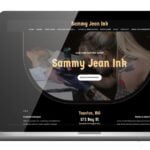What is the one thing above all else companies must do to survive? It’s not a trick question: generate revenue. And to generate revenue, companies need clients. Simple enough, right? Since it’s the lifeline of the company you’d think people have figured out how to acquire more clients. Au contraire.
In 2018, HubSpot reported 61% of marketers to say their top challenge is just that. Companies across the board are struggling to drive traffic to their website and generate leads for their sales team. But with all the advancements of digital marketing techniques, there must be some solution to this.
That’s where outbound email campaigns come in. Outbound email marketing is a way for companies to target potential clients on a massive scale and still maintain a highly specific, personalized one-to-one connection. How does outbound email work? Let’s jump into it.
Outbound Overview
The purpose of outbound emails is to get your desired prospect to schedule a phone call with your sales team (or visit your website or sign up for a newsletter, you name it). To do this, your email has to stand out amongst the hundreds of emails and messages people receive on a day-to-day basis.
That means the email you create for outbound marketing campaigns must be personalized and relevant to each recipient. But to save time and energy, the email must be scalable. This seems like a contradiction. How can a message be personalized and appeal to a mass audience? That’s the magic of outbound emails.
There are four steps businesses can use in any niche to generate leads:
- Create a list of potential clients
- Set up your outbound campaign
- Send your sales team the generated leads
- Test and iterate
Finding Potential Clients
The first step in the outbound email campaign is to determine who your potential clients are. Are they Fortune 500 companies? Are they tech-based firms? Knowing what niche your clients belong to will help navigate your search. Once you know your desired clientele, you can then use a few different resources to find them.
- LinkedIn Sales Navigator – LinkedIn has a handy extension called the Sales Navigator. This allows you to search all of LinkedIn for companies and people based on a set of criteria. With a total of 23 different filters, you can easily narrow in on your ideal client. To name a few categories, you can search by:
- Keywords
- Geography
- Industry
- School
- Profile languages
- Seniority level
- Years in current position
- Function
- Title
- Years of experience
- Company
- Company headcount
- Social media search – Most companies have some form of social media presence, which means this process can be replicated to a lesser degree on any other social media site. 98% of B2C businesses and 89% of B2B businesses use Facebook, and many of them use Twitter and Instagram as well.
- Top X Lists – Say your ideal clients are medical device manufacturers. Searching online for the top 20 medical device companies would yield many different lists, all of which are full of your ideal clients. Repeat this process until you have an extensive list of possible leads.
Creating your Outbound Campaign
Once you have your list of potential clients, it’s time to make the campaign. This is where the nitty-gritty happens. To give you an idea of how an email campaign works, it’s like this…
Company A wants to reach out to Company B, C, D, and E. Company A then writes five different email templates. Template 1, 2, 3, 4, and 5. On day 1 of the campaign, Company A sends Template 1 to the four other companies. Email Templates 2, 3, 4, and 5, are then sent on day 3, day 7, day 14, and day 21, respectively. If at any point throughout the campaign one of the companies replies, they are directed to the sales team, and they no longer receive emails.
It’s simple yet effective. To create this successful campaign, you need to do three things:
- Write out the email copy
- Create an emailing schedule
- Adhere to all CAN-SPAM Act guidelines
Email Copy
This is where the magic of outbound email happens. The goal of writing email copy is to make an email sound individualized to the recipient but do so in a way that can scale to thousands of people. Not only that, but you also need to create a series of these emails for however many steps you want in the email campaign. If you want to send a reminder email once a week for three weeks, you’ll need to write a series of four emails, each building atop the others.
Creating a schedule
Some marketers swear by having eight steps in the email campaign. Others prefer four to five emails. At a minimum, you should have three steps in your email campaign, and they should be spread out over a month. This will prevent potential clients from missing your email and losing out on your business.
Adhere to the CAN-SPAM Act
In 2003, President Bush signed into law national standards for how commercial businesses could cold email. They called this act the CAN-SPAM Act, and it was a way to prevent every person with an email from being swarmed by ads and spam all day long. When working on outbound email campaigns, these same guidelines must be followed. To make sure you’re doing everything correctly, here are some common points companies will forget.
- You must have an address and state the address in the email.
- Don’t use misleading subjects.
- You must provide recipients with an opt-out option.
- Honor any opt-out requests.
Sending Your Sales Team Leads
The funny part about outbound email is that sometimes it works too well. Companies often have to “shut the machine off” because it is generating too many leads for a sales team. Which, to state the obvious, is a good problem to have. Make sure your sales team is ready and available when you start the campaign.
Test and Iterate
Once you run through a full cycle of emails, it’s time to check on the progress and find any weak points. Some common areas that will need improvement are:
- Low open rates
- Low reply rates
- Individual steps underperforming
A/B Testing
Before we dive into how to fix each variable, you first need to know about A/B testing. This is a simple way of accruing data one variable at a time. Change one component of your email campaign while keeping the rest of it the same. One set of emails will constitute your A group, the other, your B group. If your B group has a 15% increase in open rate, reply rate, or conversion rate, you know whatever change you made in sending emails was beneficial.
Open Rate
Two factors determine whether someone opens an email that’s in their inbox or not. Perhaps the most obvious is the subject line. The other factor is the first line of the email. Make sure you A/B test both to identify which one is holding you back.
- Subject line – Is the subject line captivating? Is it clear and concise? Does it draw you into the email and make you want to click on it? Is there any way you can personalize it? These are the questions to ask yourself about a subject line. For increased open rates, try keeping the subject positive and including their first name.
- The first sentence – Because the first sentence can be read on a desktop, keep in mind how you start your email. Try beginning with a compliment. Whatever you decide, keep it friendly and personal.
Reply Rate
If you have a high open-rate of 50-60% but a low reply rate of about 0-5%, this means you need to focus on a different pair of components. The two most common turn-offs for recipients are the length of an email and the call to action (CTA). By fixing these two, you should see an increase in replies.
- Length of email – There is no exact science for how long an email should be, but you should always try to write your message with as few words as possible. A good rule of thumb to follow is somewhere between 60 to 100 words total in the body of the message.
- Call to action – Your call to action tells the recipient what you want them to do. It’s up to you whether you want them to set up a call, visit your website, or sign up for a newsletter. Whatever you decide, make sure your email copy leads up to your CTA in a logical fashion. Don’t merely throw it in at the end because you know you’re supposed to have one.
Individual Steps
Because you have different email templates sent out with each step, you probably received more responses on certain steps than others. Use this to guide you to what works and what doesn’t. Change the steps of your email marketing campaigns that performed poorly and keep those which worked well.
Benefits of Outbound Email for Your Business
If generating leads has been a struggle for your business in the past, you should consider outbound email. It’s an effective marketing strategy that brings a personalized email to a massive scale. With A/B testing, all you have to do is set it up once. Then you can tweak and adjust as needed to produce the desired results.
Sources:
HubSpot. The Ultimate List of Marketing Statistics for 2019. https://www.hubspot.com/marketing-statistics
Radicati. Email Statistics Report, 2015-2019. https://www.radicati.com/wp/wp-content/uploads/2015/02/Email-Statistics-Report-2015-2019-Executive-Summary.pdf
Federal Trade Commission. CAN-SPAM Act: A Compliance Guide for Business. https://www.ftc.gov/tips-advice/business-center/guidance/can-spam-act-compliance-guide-business
Hootsuite. 41 Facebook Stats That Matter to Marketers in 2019. https://blog.hootsuite.com/facebook-statistics/
The post How Does Outbound Email Work? appeared first on Power Digital.
Article From: "Carly Biggs" Read full article
 SERPCOM is a full-service Boston digital marketing agency focused on improving online visibility, increasing traffic, raising revenue and providing SEO services.
SERPCOM is a full-service Boston digital marketing agency focused on improving online visibility, increasing traffic, raising revenue and providing SEO services.
SEO-first: A fundamentally better approach to online marketing.
Digital Marketing | SEO | Web Design & Development | Search Engine Marketing

SERPCOM is a full-service Boston digital marketing agency focused on improving online visibility, increasing traffic, raising revenue and providing SEO services. SEO-first: A fundamentally better approach to online marketing.
Digital Marketing | SEO | Web Design & Development | Search Engine Marketing
SERPCOM is a full-service Boston marketing agency focused on improving online visibility, increasing traffic, raising revenue and providing SEO services for leading brands.
Maximize the value of your website and turbo charge your online marketing efforts with SERPCOM. Call or click the button and start making the web work for you.
Just click on the Phone Number to dial on your phone:





